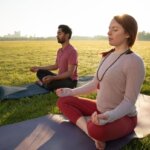Dance for Parkinson’s Disease
Recent studies suggest that dance can be a healing strategy for Parkinson’s disease as it contributes to improving motor function. Researchers say that it acts as psychotherapeutic movement intervention in the treatment of Parkinson’s diseases since it compliments its medications. Dance for Parkinson’s Disease. today, we will know, how Dance can help Parkinson’s Patients. The symptoms of Parkinson’s disease can diminish the quality of life.
Impaired gait, imbalance, the inability of muscles to move or bent, tremor such symptoms can disturb their sleep, make the patient invariably tired and moody with non-motor symptoms leading them to cognitive impairment.
Though there are anti-Parkinsonism therapies available which emphasize on alleviating their health or controlling the motor symptoms, the therapies have their own limitations due to the presence of non-motor problems.
Also, strong solutions for treating the non-motor symptoms may not always be accessible.
Intervening the process through activities such as dance therapy hold capacity to concurrently attend both the non-motor and motor symptoms of the Parkinson’s disease.
Since the medications or possible treatments of Parkinson’s diseases have a lot of complexity, dancing seems simple yet effective. That exactly what raises interest in dance therapy among patients and caretakers.
How does it address motor symptoms?
To dance, one needs to make use of muscle movements and have a control on full body, balance it, have different postures, etc. which eventually addresses the motor symptoms. It essentially helps the patient in overcoming the hurdles while making different movements.
How does it address non-motor symptoms & How Dance can help Parkinsons Patient?
Since dancing enhances the emotional and social well-being of the person, it does help deal with non-motor symptoms of the disease. Even the music and interaction with others can contribute to treating Parkinson’s disease.
The patient does not have to really learn dance, unlike traditional dance classes, it lets the patient delight in recreational attributes of the activity. Most importantly, it addresses the biopsychological status of the person.
When the advantages of the dance therapy were studies through around ten Parkinson’s patients, it was found dance could forsooth gradual progress in Parkinson’s patients. The patients in the study were compared with the control group or support group therapy.
For reference purpose, Dance for Parkinsons Patient Credit: CBC News: The National
The therapy sessions were conducted once in 7 days for around one hour which continued for more than 2 months. To integrate the different levels of functional capacity in patients, the dance movements were customized as per the individual’s potential.
It also paid attention to knowing how every movement is impacting the patient’s mental health, mood or balance. For this, they studied the patient’s emotions, feelings, gait, coordination, etc.
For caretakers, the dance therapy sessions also included educating the supporter about every movement influencing the patient’s mental health and mood.
They were also taught how these movements can be incorporated into their daily movements. This can help the caretaker to study the improvement of dance therapy on a long-time experimental base.
Among the participants of dance therapy, every group finished with the study which was 70% of all sessions. Though there was a pain in the lower back area to one participant from the group after the dance therapy, it reportedly did well for rest participants from the groups. Even the case of one participant who suffered from the pain does not have strong evidence of dance therapy causing the pain.
As the dance therapy sessions had ended, all participants were asked to give feedback on the sessions.
While most of all them enjoyed the dancing sessions, some of them even reported feeling better physically. Following which, almost 80% of participants showed interest in future dance sessions if any.
Also, the caretakers reviewed the sessions saying they would recommend it to other Parkinson’s disease patients that they know.
As not everyone was included in the dance therapy sessions, one of those who were not a part of the dance therapy group complained about not being involved in the group and dance session activities.
On finishing the study and even the feedback sessions, researchers evaluated the overall study and reduction in motor disability scores both groups. The analysis was made on the basis of a comparison between two groups.
It as observed that dance therapy had helped them in many manners such as performing the daily activities with minimum or no help from the caretaker. There was some positive impact on non-motor symptoms as patients were reportedly had fewer problems of fatigue and cognition.
They concluded that dance therapy could be effective if it mainly targeted motor symptoms of Parkinson’s disease. Since dancing therapy involves strengthening of muscle and stretching them, it can help the person to increase reduce the rigidity of patients.
This can eventually help patients to attain balance in their physical activities or show a considerable improvement in it.
If the patients practiced dance through such therapy, it can also activate some of the brain functions which typically do not work in Parkinson’s disease patient.
Though the study showed a great scope of improvement in patients through dance therapy, they are skeptical to declare it general therapy for patients.
This is because the study involved only a few Parkinson’s patients. Having said that, after receiving a positive analysis from the study conducted, researchers are planning to understand the long-term impact with the help of regular dance sessions in Parkinson’s patients.







